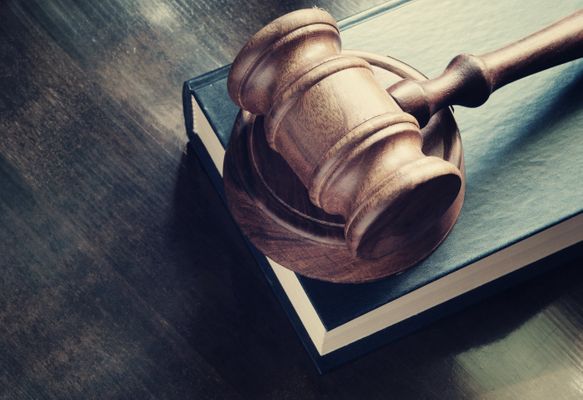4.3.2
Nazi Racial Policies, 1933-1939
Policies Towards Undesirables 1933-1945
Policies Towards Undesirables 1933-1945
The Nazis wanted to remove all ‘undesirable’ or ‘impure’ elements from the German Volk.


Categories
Categories
- Political:
- Socialists, communists, those who were actively against Nazism.
- Asocial:
- Anyone who didn’t ‘fit’ in with Volksgemeinshcaft including: alcoholics, beggars, delinquents, gypsies, homosexuals, Jehovah’s Witnesses, prostitutes, the ‘workshy’.
- Biological:
- Non-Aryan races: e.g. Jews, Slavs, Africans, mixed race people, gypsies.
- The mentally ill, physically handicapped, ‘feebleminded’, people with hereditary disease including epilepsy, Huntington’s chorea.


Dealing with undesirables
Dealing with undesirables
- Political:
- Concentration camps, re-education, long term imprisonment, execution.
- Asocial:
- Imprisonment, directed to employment, sterilisation, euthanasia, concentration camps, extermination.
- Biological:
- Economic persecution (e.g. Law for the Restoration of the Civil Service), social segregation (e.g. marriage laws, ghettoes), violence and intimidation (e.g. Kristallnacht); imprisonment usually leading to death; genocide.


Policies for homosexuals
Policies for homosexuals
- 1934: The Gestapo ordered to local police forces to keep lists of homosexuals.
- 1935: Legal definition of criminal homosexual acts now covered intent or thought.
- 1936: Reich Central Office for Combatting Homosexuality and Abortion formed.
- 1937: All homosexual SS officers were sent to concentration camps and shot.
- 1938: The Gestapo ordered convicted homosexuals be sent to concentration camps.
- 100,000 men were arrested 1933-45, about half imprisoned, up to 15,000 sent to concentration camps.


Policies for the Roma (gypsies)
Policies for the Roma (gypsies)
- Germany’s 30,000 gypsies were not threats unless they ‘infected’ the German blood pool, but their persecution worsened with the radicalisation of the regime.
- 1938: The Decree for the Struggle against the Gypsy Plague.
- 1939: Gypsies were sent to camps before being expelled to Poland.
- 11,000 of the 20,000 gypsies in outfits were gassed.
- 1940: 2,800 gypsies joined Jews transported to Auschwitz.
- In 1941-2 gypsies and mixed-race gypsies were included in measures drawn up against Jews.


Complusory sterilisation and euthanasia
Complusory sterilisation and euthanasia
- The 1933 Law on the Prevention of Hereditarily Diseased Offspring listed diseases, infirmities and handicaps could be compulsorily sterilised.
- About 350,000 were sterilised 1933-45. By 1939 the policy included forced ‘euthanasia,’ i.e. murder. These policies were not widely publicised until 1939.
- 1939: T4 was established to murder disabled children. It was extended to adults.
- 200,000 were murdered by 1944.
Policies Towards the Jews
Policies Towards the Jews
Anti-Semitism was central to Nazi ideology. A clear policy developed from 1935 onwards with the Nuremberg Laws.


Early pressures
Early pressures
- The leadership responded to pressures from below to keep it under control.
- 1 April 1933: boycott of Jewish businesses and shops to channel unrest by SA and more radical Nazis wanting NSDAP’s 25 Points enacted.
- Law for the Restoration of the Civil Service excluded Jews from the civil service.
- 1935: Nuremberg Laws announced after pressure from Gauleiters and radical NSDAP members wanting 25 Points enacted, including Jews losing citizenship.


1935 Nuremberg Laws
1935 Nuremberg Laws
- Law for Protection of German Blood and German Honour:
- Mixed marriages and sexual relations between Jews and Aryans forbidden.
- Reich Citizenship Law:
- Deprived Jews of German citizenship.
- Law for the Protection of Genetic Health:
- ‘Certificates of fitness to marry’ required, including medical examination.


Regime radicalisation 1936-1938
Regime radicalisation 1936-1938
- 1936: Himmler put in charge of Jewish emigration. This was the preferred policy of dealing with the ‘Jewish question’ at the time.
- September 1937: Hitler made violent speech at Nuremberg attacking Jews. The regime begins to radicalise.
- Schacht was against anti-Semitic measures due to economic consequences.
- Goering was more influential in the economy from 1936 (Office of the Four Year Plan).
Reichkristallnacht 1938
Reichkristallnacht 1938
Kristallnacht was the first time the Nazis were openly violent towards the Jews. This indicates an escalation in anti-Semitic policies.


Course of Kristallnacht
Course of Kristallnacht
- On 9-10 November there was ‘spontaneous’ uprising of Germans against Jews after the assassination of a German by a Jew in Paris.
- Jews’ homes, over 7,500 businesses and 267 synagogues were attacked.
- 91 Jews were murdered across Germany.
- Hundreds of women were raped.
- Over 20,000 Jews were arrested and sent to camps.
- Heydrich ordered synagogue records to be seized.


Consequences of Kristallnacht
Consequences of Kristallnacht
- The government blamed the Jews for Kristallnacht and charged the community one billion reichsmarks for the damage.
- After Kristallnacht more anti-Jewish decrees excluded Jews from economic activities (e.g. trades, business, government contracts).
- Decrees also banned Jews from schools, universities, cinemas and sports.
1Political & Governmental Change, 1918-1989
1.1Creation & Collapse of Weimar, 1918-1932
1.2Nazi Dictatorship, 1933-1945
1.3Return to Democratic Government, 1945-1989
2Opposition, Control & Consent 1918-1989
2.1Opposition to Government, 1918-1989
2.2Controlling the People, 1918-1989
3Economic Developments & Policies, 1918-1989
3.1Reacting to Economic Challenges, 1918-1932
3.2Controlling the Economy, 1933-1945
3.3Creating the Social Market Economy, 1945-1989
4Aspects of Life, 1918-1989
4.1Attitudes Towards Women, 1918-1989
4.2Education & Cultural Developments, 1918-1989
5Historical Interpretations
5.1Influence of German History
5.2Hitler & Foreign Policy
5.3Contribution of Other Nations to WW2
5.4Reasons for Invading Poland
Jump to other topics
1Political & Governmental Change, 1918-1989
1.1Creation & Collapse of Weimar, 1918-1932
1.2Nazi Dictatorship, 1933-1945
1.3Return to Democratic Government, 1945-1989
2Opposition, Control & Consent 1918-1989
2.1Opposition to Government, 1918-1989
2.2Controlling the People, 1918-1989
3Economic Developments & Policies, 1918-1989
3.1Reacting to Economic Challenges, 1918-1932
3.2Controlling the Economy, 1933-1945
3.3Creating the Social Market Economy, 1945-1989
4Aspects of Life, 1918-1989
4.1Attitudes Towards Women, 1918-1989
4.2Education & Cultural Developments, 1918-1989
5Historical Interpretations
5.1Influence of German History
5.2Hitler & Foreign Policy
5.3Contribution of Other Nations to WW2
5.4Reasons for Invading Poland
Unlock your full potential with Seneca Premium
Unlimited access to 10,000+ open-ended exam questions
Mini-mock exams based on your study history
Unlock 800+ premium courses & e-books
